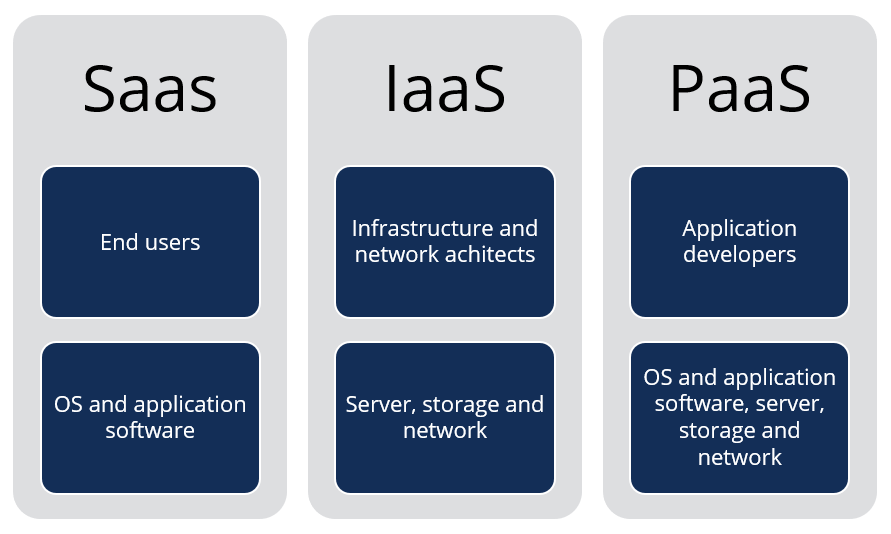Enhance Your Company with Cloud Services: A Guide to Modern Solutions
Wiki Article
Achieve Seamless Scalability With Cloud Provider
In the ever-evolving landscape of cloud solutions, achieving smooth scalability stands as a cornerstone for modern organizations looking for to stay affordable and adaptable. The pursuit for smooth scalability with cloud services reveals a world of opportunities for those ready to embrace the transformative power of dynamic source administration.Advantages of Cloud Scalability
Cloud scalability provides organizations the adaptability to dynamically change resources based on demand, making certain ideal efficiency and price efficiency. One essential advantage is the capacity to range resources up or down swiftly in response to rising and fall work. This dexterity makes it possible for businesses to meet transforming customer needs without over-provisioning resources, inevitably causing cost savings. Scalability also boosts performance by guaranteeing that systems can handle increased website traffic or work without experiencing downtime or slowdowns. By successfully allocating resources, organizations can maintain high levels of efficiency during peak times without unneeded expenses during quieter durations. Additionally, cloud scalability advertises innovation and experimentation by enabling businesses to conveniently test originalities and scale them as required. This adaptability encourages a culture of continuous improvement and adjustment, making it possible for companies to remain affordable in a rapidly developing market landscape. Inevitably, the benefits of cloud scalability expand past cost financial savings to encompass enhanced performance, agility, and development.Trick Features for Scaling
Efficient scaling in cloud solutions counts on essential attributes that enable companies to change sources dynamically based on demand. One essential attribute for scaling is elasticity, allowing sources to scale up or down in response to varying work. This makes sure that companies can satisfy efficiency demands without over-provisioning sources. Another key feature is scalability, allowing systems to deal with raised workload by including resources flawlessly. This function is vital for fitting growth without endangering performance. Furthermore, automation plays an essential role in scaling by automating the provisioning and de-provisioning of sources based upon predefined plans. Automation decreases human treatment, boosts efficiency, and ensures quick reaction to changing demands. Surveillance and analytics devices are likewise necessary for scaling, offering insights right into resource use, performance metrics, and potential bottlenecks. These tools enable companies to make educated choices and maximize source appropriation for reliable scaling. In general, these essential functions collectively equip companies to accomplish smooth scalability in cloud services.Carrying Out Auto-Scaling Methods
To efficiently optimize source allotment and adapt to differing workloads, companies have to purposefully execute auto-scaling methods in their cloud services framework. Auto-scaling allows systems to immediately adjust the number of compute sources based on real-time demand. There are different auto-scaling techniques that companies can utilize, such as anticipating scaling, which utilizes historic data to forecast future source requirements, and responsive scaling, which replies to present work changes.
Finest Practices for Scalability
For organizations intending to boost their scalability in cloud solutions, applying ideal techniques is crucial for optimal performance and source administration. One key finest method is developing applications with a microservices design. This technique breaks down applications right into smaller sized, independent services that can be released, updated, and scaled separately, permitting better flexibility and scalability.An additional vital technique is utilizing containerization technology, such as Docker or Kubernetes. Containers allow the product packaging of applications and their dependencies right into isolated systems, making it much easier to scale elements independently and release them continually across various atmospheres.
Additionally, applying automated implementation and infrastructure as code (IaC) can improve scalability efforts (linkdaddy cloud services). Automation tools like Terraform or Ansible help in provisioning and handling resources efficiently, reducing hand-operated errors and enabling fast scalability
In addition, keeping an eye on performance metrics, setting up informs, and conducting regular ability planning are important practices to make certain proactive scalability administration. By adhering to these best techniques, companies can achieve smooth scalability in their cloud solutions while optimizing performance and source use.
Tracking Performance Metrics
When assessing the performance of cloud services scalability, carefully checking performance metrics is critical for making sure optimal functionality and resource allotment. By continuously tracking crucial efficiency signs (KPIs) such as feedback times, latency, throughput, and resource use, companies can obtain useful insights into the health and performance of their cloud framework. Checking performance metrics enables the very early discovery of prospective bottlenecks or concerns that can affect scalability, allowing proactive procedures to be taken to address them prior to they intensify.

Conclusion
Finally, attaining seamless scalability with cloud services is necessary for companies to enhance efficiency, enhance innovation, and preserve high performance degrees throughout peak times. By leveraging the advantages of cloud scalability, applying auto-scaling strategies, making use of vital functions such as elasticity and automation, and following finest techniques like application style and performance tracking, companies can efficiently scale their systems while maximizing resource usage and efficiency.The mission for seamless scalability with cloud solutions reveals a world of possibilities for those prepared to welcome the transformative power of dynamic resource administration.
Cloud scalability supplies companies the flexibility to dynamically readjust resources based on demand, making certain ideal performance and price effectiveness. An additional vital function is scalability, enabling systems to deal with boosted work by including resources seamlessly.For companies aiming to enhance their scalability in cloud universal cloud Service solutions, applying finest techniques is important for optimal efficiency and source monitoring.When evaluating the effectiveness of cloud services scalability, closely keeping track of efficiency metrics is important for making sure optimal functionality and source appropriation.
Report this wiki page